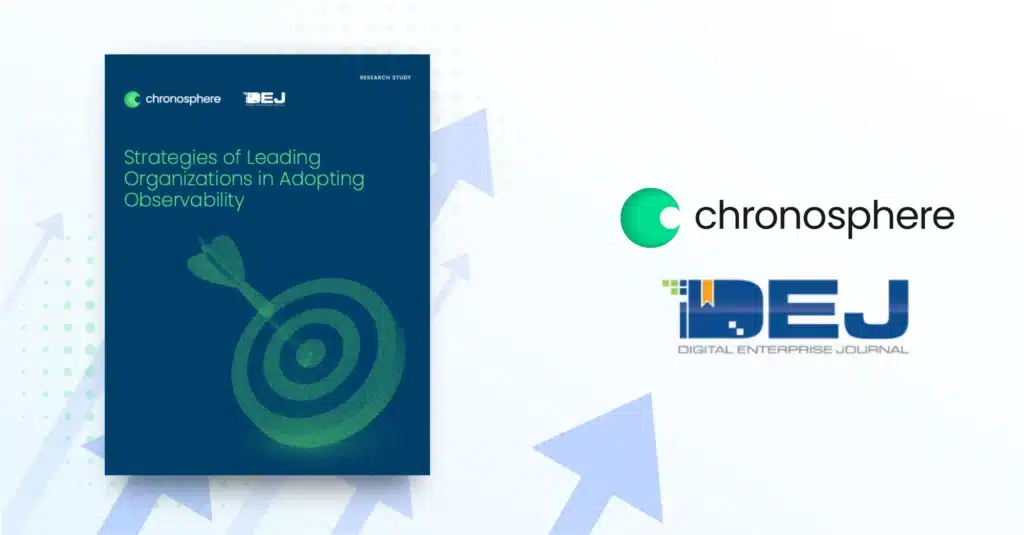
A new study from the Digital Enterprise Journal shows how observability is a strategic initiative which impacts each area of the business.

On: May 17, 2022
A new study from the Digital Enterprise Journal (DEJ), Strategies of Leading Organizations in Adopting Observability (available for download here) shows that top performing organizations (TPO – top 20% of research participants based on performance) are 82% more likely to be using the impact on business outcomes as a selection criteria when evaluating observability solutions. This shows that observability is a strategic initiative which impacts each area of the business.
The study also reveals that organizations are experiencing a perfect storm of business and technology trends and shows a 3.7 times increase in the number of organizations that are forced to innovate to stay competitive, over the last three years. More than 1,300 organizations participated in the study with a good representation of business and technology executives. Sixty-nine percent of these executives reported that their top goal for adopting observability is to enable using technology as a competitive advantage. That shows that observability adoption, if done right, is a major enabler for achieving key business goals.
However, the study also reveals that the path to leading performance in adopting observability and using it to create a business value is not easy and organizations reported a number of challenges. Some of the most significant pain points include:
In order to effectively address these challenges and get the true value of adopting observability, organizations should look to deploy capabilities that are enabling strategies of TPOs. The study identified the top criteria that leading organizations are using when selecting observability solutions.
The research also shows that organizations should consider making changes to their processes and organizational approach to reach performance levels of TPOs. The study reveals that TPOs are:
As mentioned above, effective observability deployments are impacting all of the key business areas and benefiting multiple job roles. To maximize the value, organizations have to ensure organizational and business alignment with technology deployments and take more of a strategic and holistic approach when adopting Observability.
The study shows that the effectiveness in adopting observability results in significant business advantages (or disadvantages). DEJ’s research found that TPOs generated 4.6 times more revenue from digital services, as compared to all others. Also these organizations are spending, on average, 43 minutes on resolving a performance incident as compared to 172 minutes (4 times more) for all other organizations. As a result, these organizations are losing $16.7 million annually due to issues with performance of digital services.
One of the key takeaways from the study is that the value of effective observability adoption goes well beyond addressing tactical issues. The true value of observability lies in its ability to enable transforming business, creating new markets, reducing inefficiencies and creating a competitive advantage.
Want to learn more? Download the full research report here.
Bojan Simic is industry analyst and founder of Digital Enterprise Journal.
Request a demo for an in depth walk through of the platform!